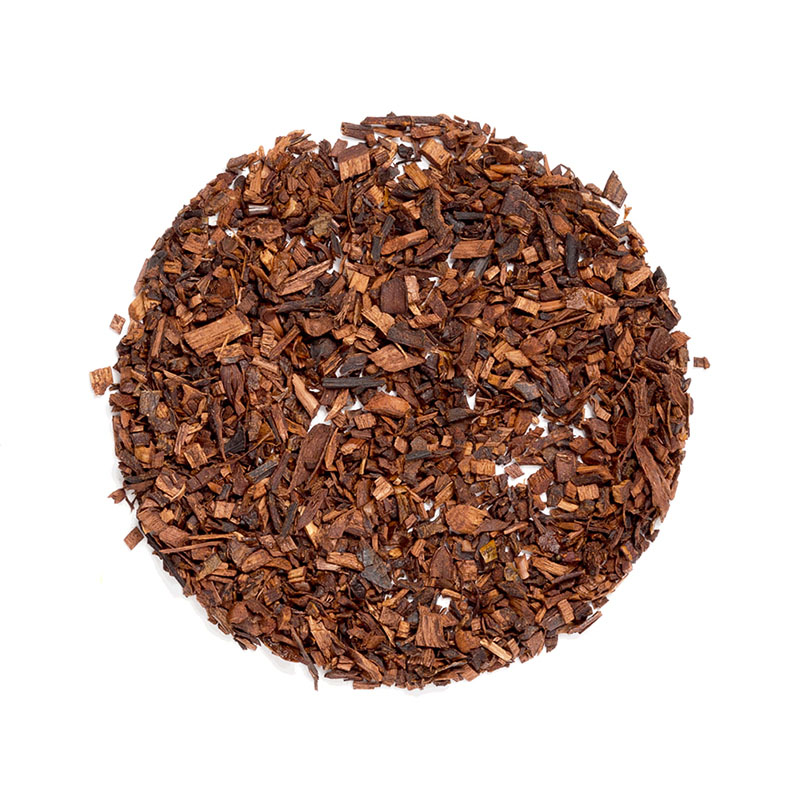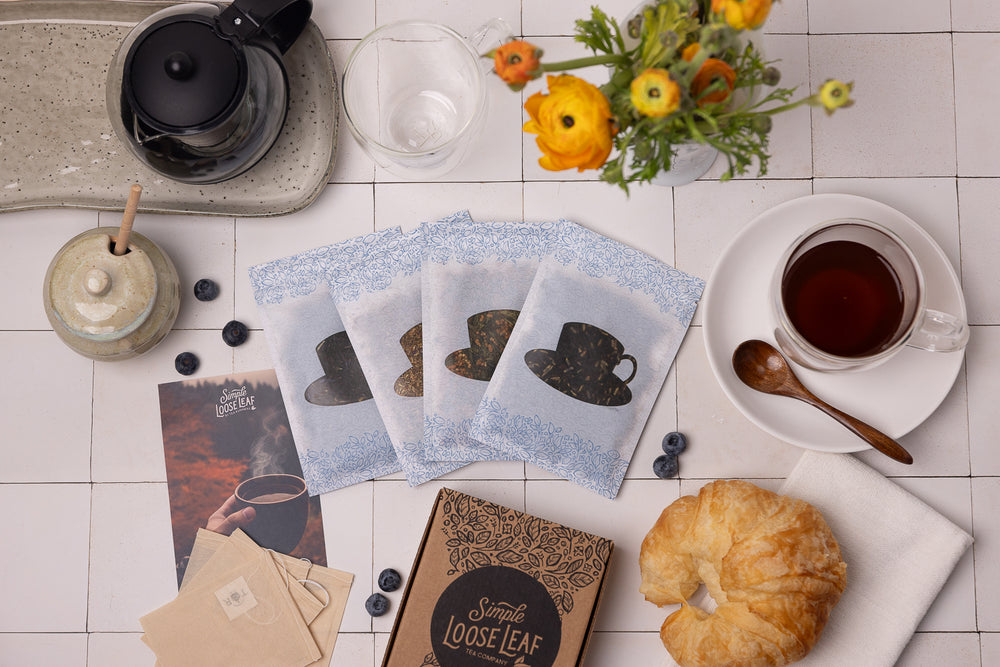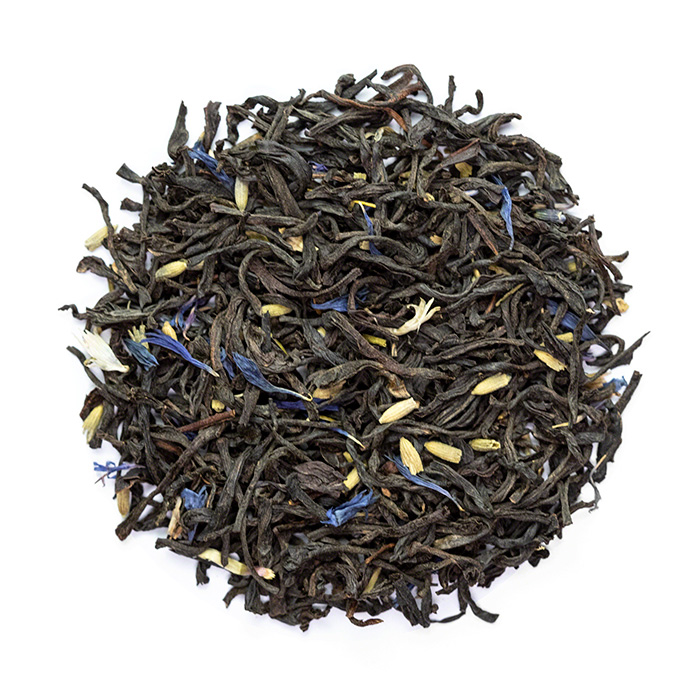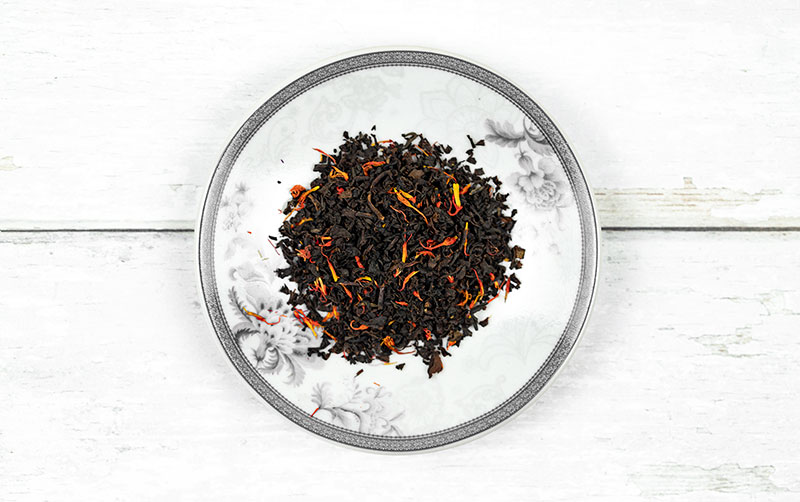Everything About Earl Grey Tea
What is earl grey tea?
Earl Grey tea is a black tea blend scented with essential oil extracted from bergamot citrus fruit peel. Bergamot orange or Citrus bergamia is an endemic plant from the Calabria region in Italy.[1] It has a green-yellow skin, closer to lemon than regular orange, and bitter and sour flavor. However, only the essential oil from the bergamot peel is used for scenting the tea. You will never find bergamot fruit or dried bergamot peel pieces in Earl Grey tea. Today, there are other types of Earl Grey tea available too. The most popular alternative is a gentler and more sophisticated specially blended Blue Lady Grey, green Earl Grey made with green tea base and herbal Grey, blended with caffeine free rooibos tea or honey bush tea.Blue Lady Grey with lavender
Origins of the tea
Earl Grey was first invented about 200 years ago in England. There are several stories about the invention of this tea, and all of them include the Grey family. What we know for sure is that it was named after the lord Charles Grey, the British Prime Minister from the early 19th century. Apparently, he received Earl Grey tea as a gift, and liked it so much that he had to re-invent it. Other sources claim that Earl Grey was invented even before lord Grey, in attempts to enhance the flavor of black tea. Scenting is actually one of the oldest ways of adding flavor to tea. While in the history it may have been used to cover the flavor of lower quality leaves, today it’s used to add flavor even to premium tea leaves.How is earl grey made?
Every Earl Grey tea contains two key ingredients–a black tea base and a bergamot orange essential oil. However, it can be made in different ways. The traditional Earl Grey tea always contains black tea base. It can be blended with one or more black teas, usually stronger malty Assam types, floral and muscatel Darjeeling or rich Chinese Keemun. Traditionally, black tea leaves are infused with bergamot orange essential oil. Today, Earl Grey is not always scented–it can be flavored too. Black tea is a fully oxidized tea type. After harvesting, tea leaves are withered, rolled, oxidized and fired. Oxidation is a process that changes the chemical composition, color and flavor of the tea leaves. That’s why black tea is dark red or orange, while green tea is green or yellow. Once the leaves are finished, they are scented with bergamot oil, or blended with other tea leaves and then scented. Did you know that you can make your own Earl Grey tea by scenting black tea leaves with food grade organic bergamot essential oil? Be careful though, not all essential oils are safe.Simple Earl Grey tea
What does earl grey taste like?
Earl Grey is deep, rich, strong, but refreshing and citrusy. It leaves a feeling of a lighter tea. Earl Grey scented with real bergamot essential oil will have a more aromatic, fresher and more relaxing scent. Scent may seem overpowering if you are not used to scented teas or to bergamot. Earl Grey will also have a strong, rich, malty or lightly smoky black tea note emerging from the background. Today, it’s likely that every Earl Grey will have a slightly different flavor, as tea companies will use different black teas and different amounts of essential oil or flavorings.Health Benefits of Drinking
Earl Grey may provide many health benefits, because it contains black tea and bergamot essential oil.1. Anti oxidative activity
Studies showed that drinking black tea has a general positive effect on health. It may provide high anti oxidative activity because it contains flavonoids. In fact, one cup of black tea will usually contain 200 mg of flavonoids[2]. Studies suggest that drinking 3 cups of tea per day, 2 grams per cup for 2 weeks, may increase flavonoids in blood by 25%[3]. They may help reduce oxidative stress and boost immune system. Bergamot too, may provide the same benefits and prevent oxidative stress[4].2. Anti-inflammatory properties
Both black tea and bergamot may provide anti inflammatory activity. Bergamot may be very helpful for improving digestion and reducing inflammation in digestive system[5]. Black tea, on the other hand, may help people with arthritis[6], diabetes[7] and skin rashes[8].3. Reducing the risk of heart disease
Studies showed that both black tea and bergamot may help decrease bad cholesterol[9] and blood fat[10] and help aid weight loss. All of these health issues may lead to heart diseases[7].4. Energy boost
Black tea is made from Camellia sinensis tea plant and contains caffeine. It usually contains more caffeine than green tea and may help boost energy. Black tea is less likely to cause the jitters than coffee, because it contains less caffeine and a small amount of L-theanine.5. Reducing stress and anxiety
Bergamot is one of the best essential oils for reducing psychological stress and anxiety[11]. Studies showed that inhaling diluted bergamot essential oil may significantly help you relax. Although it may seem strange, black tea has a calming property too. It come from an amino acid L-theanine that may help lower cortisol levels and provide relaxation[12]. If you are looking to benefit from bergamot essential oil, always choose Earl Grey tea that has been scented with the real oil, rather than flavored. How can you know? Put some tea leaves onto the paper and check a few minutes later. Teas scented with bergamot oil is likely to leave a light greasy mark.How to Brew Earl Grey
To brew the best cup of Earl Grey tea always use fresh spring water. Earl Grey is available in tea bags and loose leaf style. To enjoy the best possible aromatic citrus flavor, opt for loose leaf tea. Bring water to a boil and let it cool down for only a few seconds. Add one teaspoon of tea leaves per cup of water into a teapot or a strainer. Add hot water and steep for 3-5 minutes. Do not over-brew this tea as it may become bitter. It goes well with honey, milk and sugar.Best Food Pairings
Earl Grey is a real traditional afternoon tea, which means you can pair it with different types of food. And indeed, it goes well with many savory and sweet dishes. Try it with a lemon cake, spicy dishes or tea time sandwiches and snacks. You can pair it with white, milk and dark chocolate too.Caffeine Content
Earl Grey contains black tea. All black teas come from Camellia sinensis tea plant and contain caffeine. It’s impossible to say how much caffeine will different Earl Grey blends have, but expect medium to high caffeine content. It likely that a cup of Earl Grey tea will have around 30-60 mg of caffein, depending on how you brew it and how much tea leaves you are using. Herbal Earl Grey blends will be caffeine free. Read more about caffeine content in Earl Grey tea here.
Herbal Grey honey bush tea
Disclaimer: This article is for informational purposes only. It’s not intended to replace medical advice, diagnosis or treatment. Every person is different and may react to different herbs and teas differently. Never use teas or herbs to treat serious medical conditions on your own. Always seek professional medical advice before choosing home remedies.
References:
[1] https://www.ncbi.nlm.nih.gov/pmc/articles/PMC4345801/
[2] https://www.nature.com/articles/1602489
[3] https://www.nature.com/articles/1602489
[4] https://www.ncbi.nlm.nih.gov/pmc/articles/PMC6392855/
[5] https://www.ncbi.nlm.nih.gov/pubmed/25491246
[6] https://pubmed.ncbi.nlm.nih.gov/25964045/
[7] https://pubmed.ncbi.nlm.nih.gov/28049262/
[8] https://www.pennmedicine.org/updates/blogs/health-and-wellness/2019/december/health-benefits-of-tea
[9] https://pubmed.ncbi.nlm.nih.gov/14519829/
[10] https://www.ncbi.nlm.nih.gov/pmc/articles/PMC6273558/






Leave a comment